

Derek Fung
Lexus RZ600e: New flagship boasts more power, plenty of wings
29 Minutes Ago

Contributor
When the Kia EV9 goes on sale in Australia later in 2023, it will be available with two cabin layouts, a choice of rear- or all-wheel drive, ultra-fast charging and a big increase in the use of sustainable materials inside in comparison to Kias before it.
Here’s what we know about the Korean brand’s new electric flagship.
The EV9 ushers in a new era of design that it calls ‘Opposites United’. It’s a look that Kia describes as unapologetic.
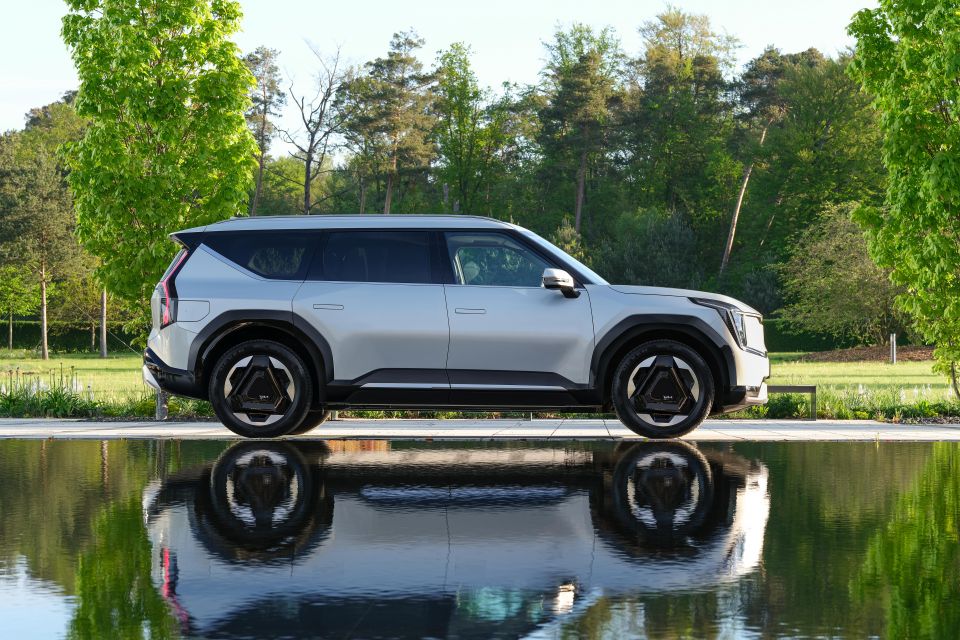
“As you see, it’s quite an upright, even boxy silhouette,” Kia global design head Karim Habib told CarExpert.
“This is something we did on purpose, we wanted to have this what we refer to as an authentic SUV silhouette. Upright front glass, upright rear glass, upright front, so that it feels capable.”
Kia has managed to remain reasonably true to the original design concept for the EV9.
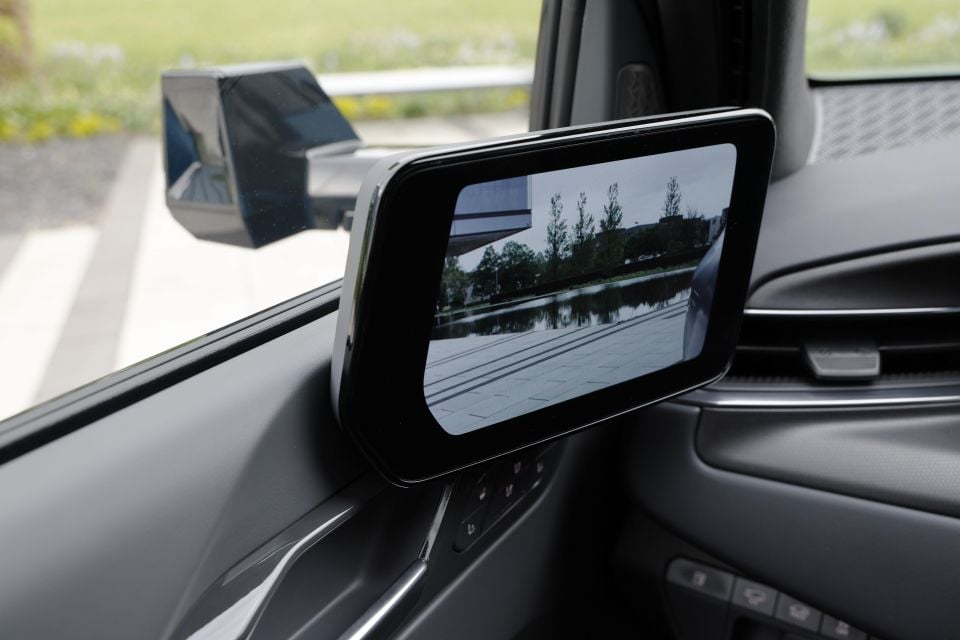
The smallest wheel size will be 19 inches in diameter, and those will be essential if you want to hit the headline 541-kilometre range. Kia will also offer 20- and 21-inch alloy wheels depending on the variant.
Another option will be swapping the traditional door mirrors for digital cameras. These are smaller exterior units, which contribute to improving the drag coefficient and range, with footage from these cameras displaying on screens inside the doors close to the A-pillar.
The EV9 will launch with a 99.8kWh battery within the floor of the chassis. Its core architecture is the same Electric Global Modular Platform (E-GMP) that underpins the EV6, and it also has an 800-volt electrical system to support fast-charging.
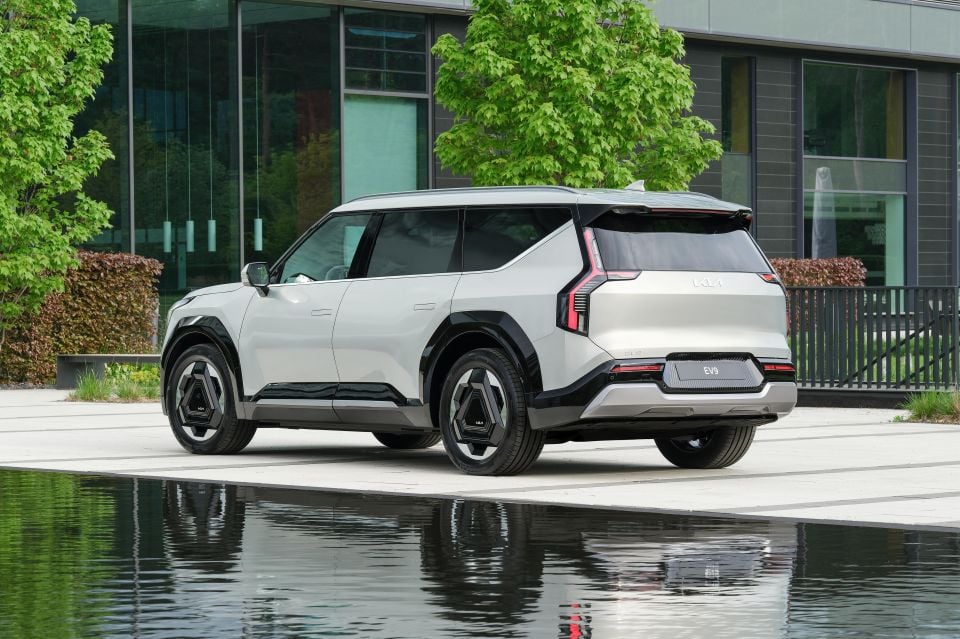
This electrical setup also allows for bi-directional charging. That means the EV9 can power external devices using the energy stored in its battery. And that’s not all; it’s also capable of Vehicle-to-Grid (V2G) and Vehicle-to-Building/Home (V2B/V2H) charging, so you can contribute to the grid or power your home with your car’s energy.
Kia says the rear-wheel-drive EV9 can add 239 kilometres of range in just 15 minutes in optimal conditions. The AWD version doesn’t lag far behind, adding 219 kilometres in the same time.
The range champion is the single-motor version. It’s capable of 541 kilometres of range under the stricter WLTP cycle and uses a 150kW/350Nm motor to drive the rear wheels. It can accelerate from 0-100km/h in 9.4 seconds and has a top speed of 185km/h.
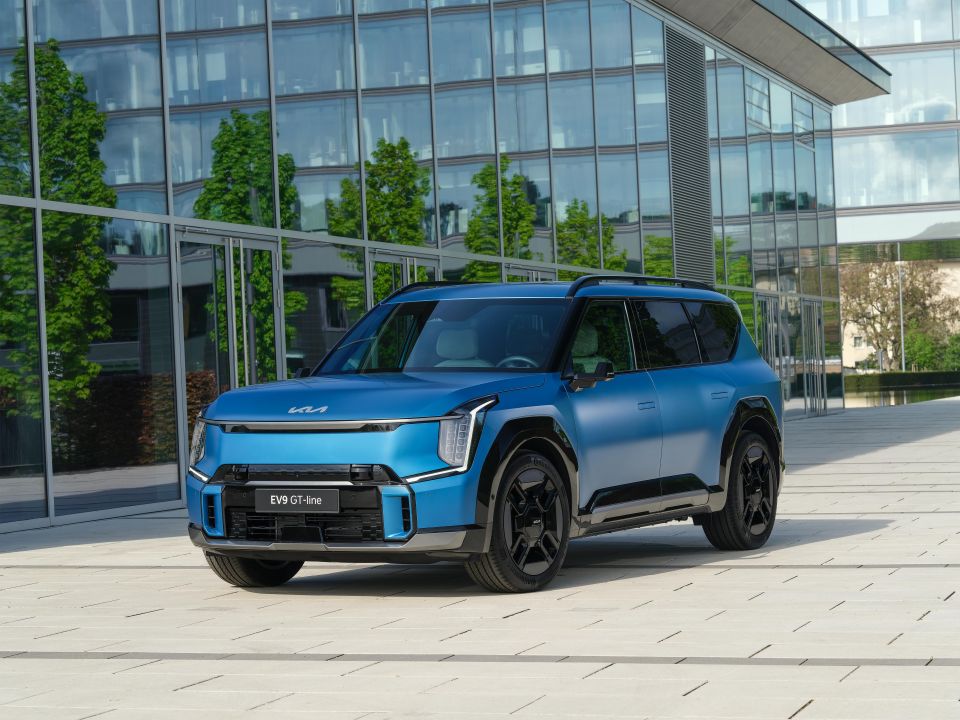
Kia allows two slightly different outputs for the dual-motor version depending on the specification grade. Each axle gets a 141kW electric motor, with the Baseline version featuring a 250Nm output for the front motor and 350Nm for the rear.
In the sportier GT-Line, the torque output of the front axle motor increases to 350Nm, matching that of the rear. That gives it a 0-100km/h acceleration time of 5.3 seconds – versus 6.0 seconds for the Baseline model. Both variants have a 200km/h top speed.
At 5010mm long and 1980mm wide, the EV9 is Kia’s most spacious passenger car to date, measuring fractionally longer than even the North American-market Telluride and Korean Mohave.
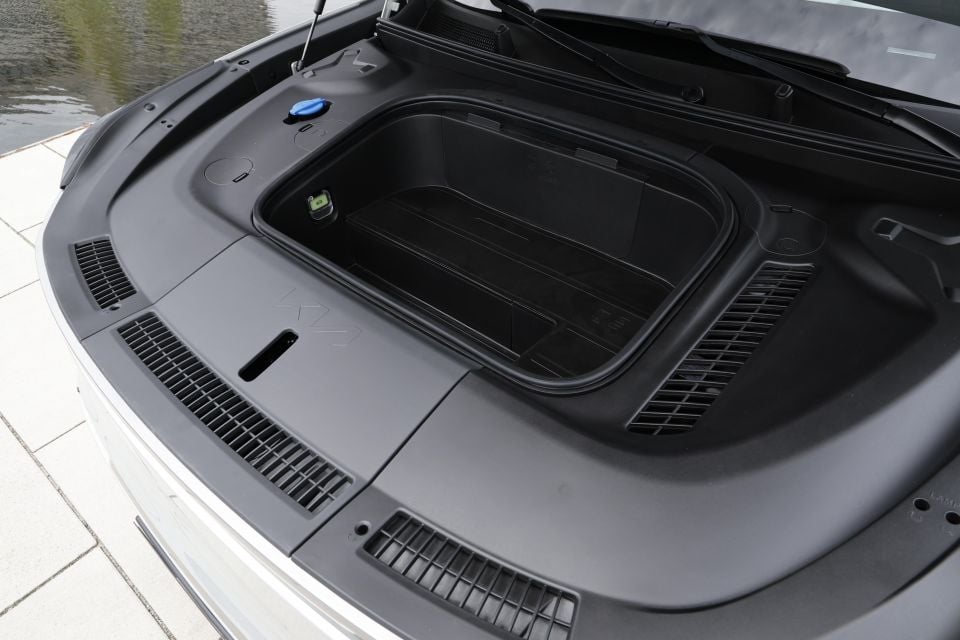
But the 3100mm wheelbase is the most important aspect of the EV9’s size, as this creates space not only for a large capacity battery but also for a more spacious passenger compartment.
The large rear doors open at a wide angle and, in the case of the seven-seat version, one-touch buttons tilt and slide the outer seats to provide easy ingress to the third row, even for adults. In the six-seat format, the middle two seats can swivel through 180 degrees to face those in the third row.
There’s plenty of storage options, too, including a 90-litre frunk on rear-wheel-drive models. However, this space shrinks to 52 litres in the all-wheel-drive version.
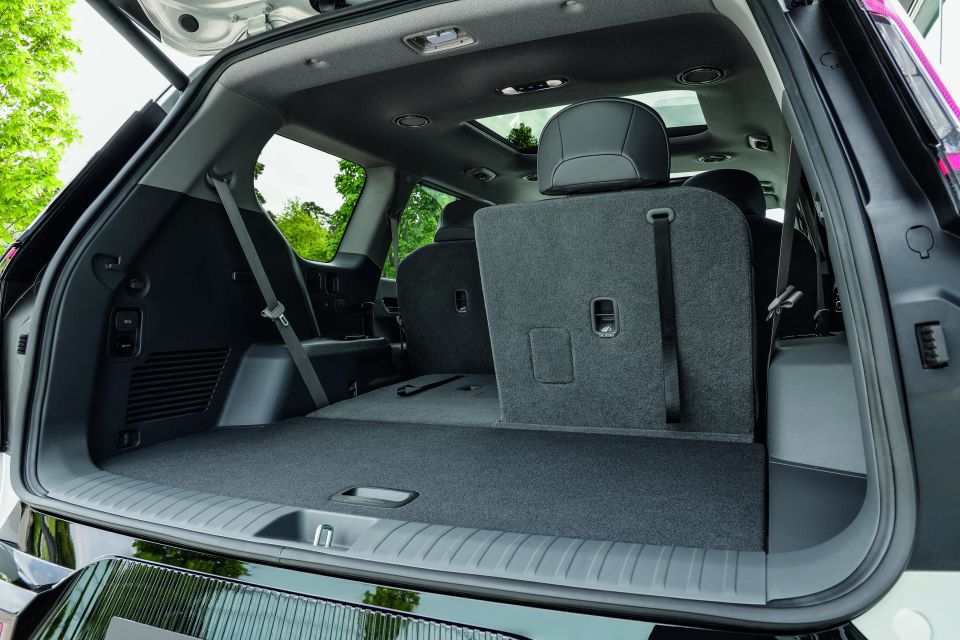

At the other end, there are 333 litres of boot space when all rear seats are in use, with 828 litres available if the third-row seats are folded down.
In front of the driver is a fully digital dashboard with a 12.3-inch instrument cluster. Next to this is a 5.1-inch screen that exclusively shows the climate settings and status of items such as the heated or ventilated seats. Then, next to that, and appearing as if behind one large panel, is the second 12.3-inch display.
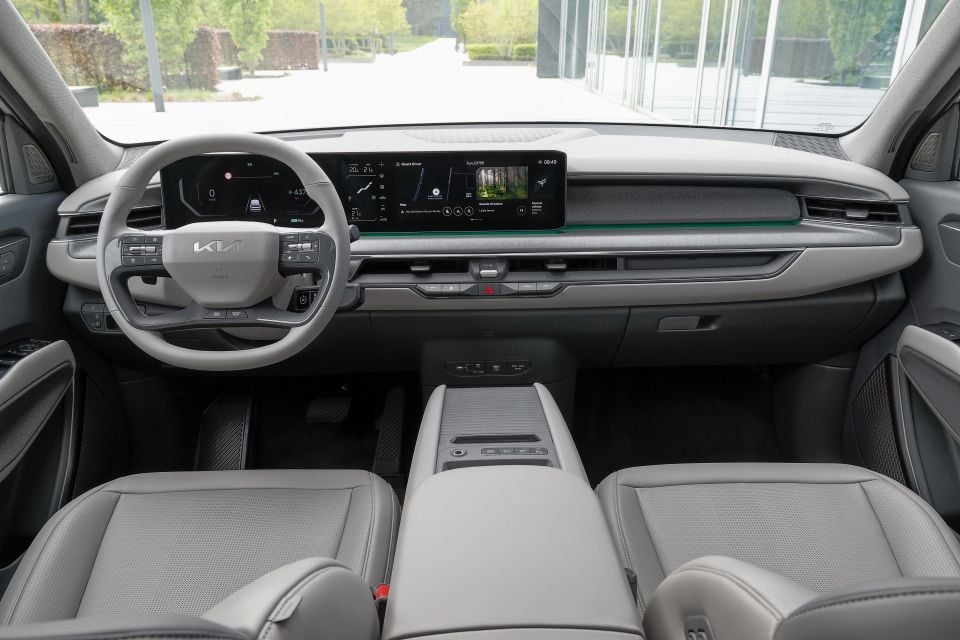
This touchscreen runs the infotainment system and is supplemented by haptic buttons that illuminate on demand across the dashboard fascia, similar to the Nissan Ariya’s.
In Europe, Kia plans to offer a Level 3 autonomous driving function in the EV9 soon after its initial introduction in locations where such technology is permitted. It does this through an array of sensors discreetly fitted around the car, including two LiDAR units in the front bumper.
It will only work in specific scenarios, mostly on motorways, and drivers will still have to pay attention to what’s going on around them, but it should take some of the strain out of longer journeys.
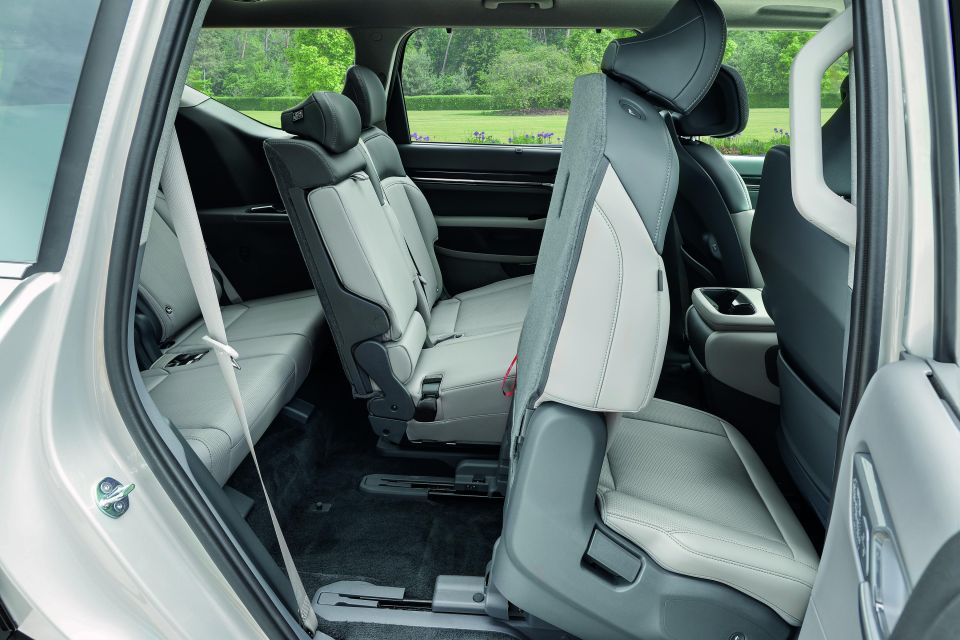
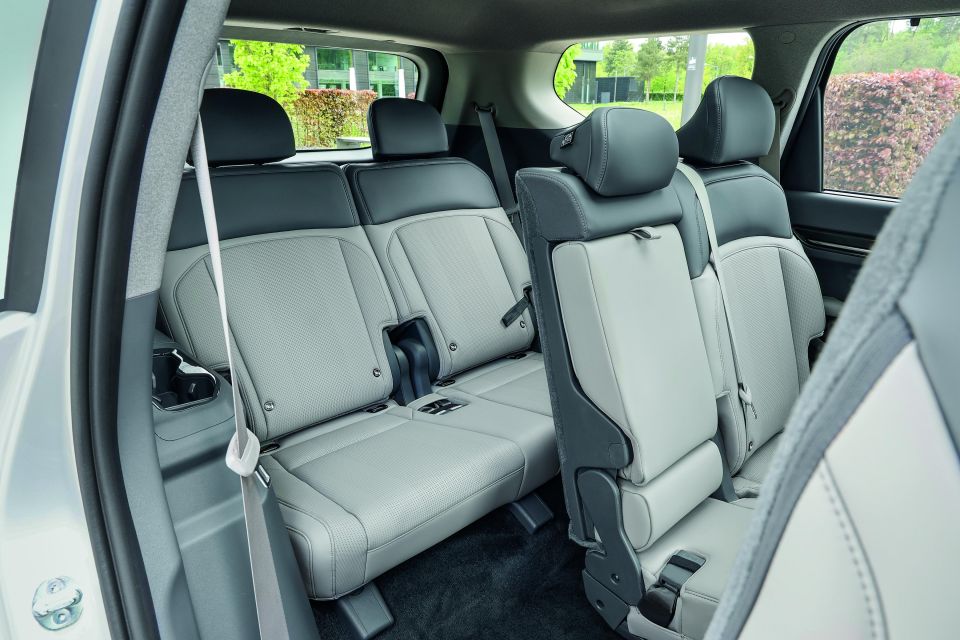
A digital key option will also be offered, allowing owners to store the EV9’s key within their smartphone. The car’s ultra-wideband technology can detect its presence, unlocking the doors and enabling it to start without even taking your phone from your pocket.
There will also be the option of sharing that digital key with friends or family, and it’s even possible to restrict certain features on the key you share.
Kia also plans to roll out new features that owners can add to the car by purchasing from the Kia Connect store and activating through over-the-air updates. In certain markets this will include increasing the vehicle’s torque output and enabling content streaming within the car.

Also available will be Remote Smart Parking Assist 2.0, allowing the car park itself automatically without the driver being inside.
One of Kia’s targets is to increase the amount of recycled materials inside its cars significantly. It’s part of a new project that will see 20 per cent of the surfaces inside the car produced from recycled goods, ranging from plastic bottles to discarded fishing nets reclaimed from the ocean.
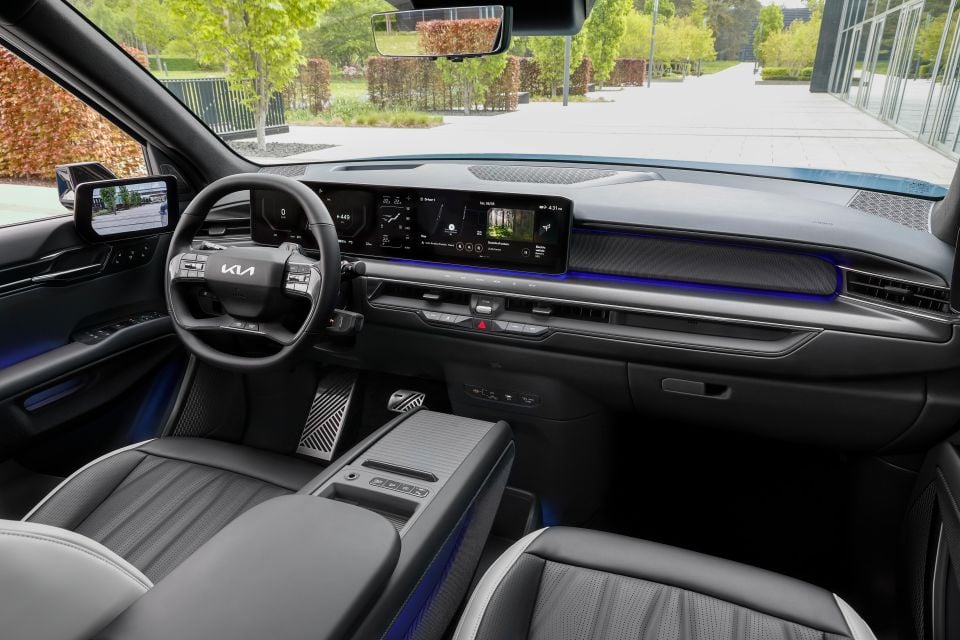
You’d hardly notice from looking inside — it’s quite impressive how trash can be transformed into materials and surfaces with such a high-quality feel. Even the switchgear and trim use BTX-free paint.
One other very simple but effective touch is that all of the buttons you touch by feel, such as the electric seat adjustment, are surrounded by a nice glossy paint so you’re never coming into contact with any hard and scratchy plastics.
In response to the need for more sustainable materials, Kia has embraced Bio Polyurethane (PU) as an alternative to leather seats.
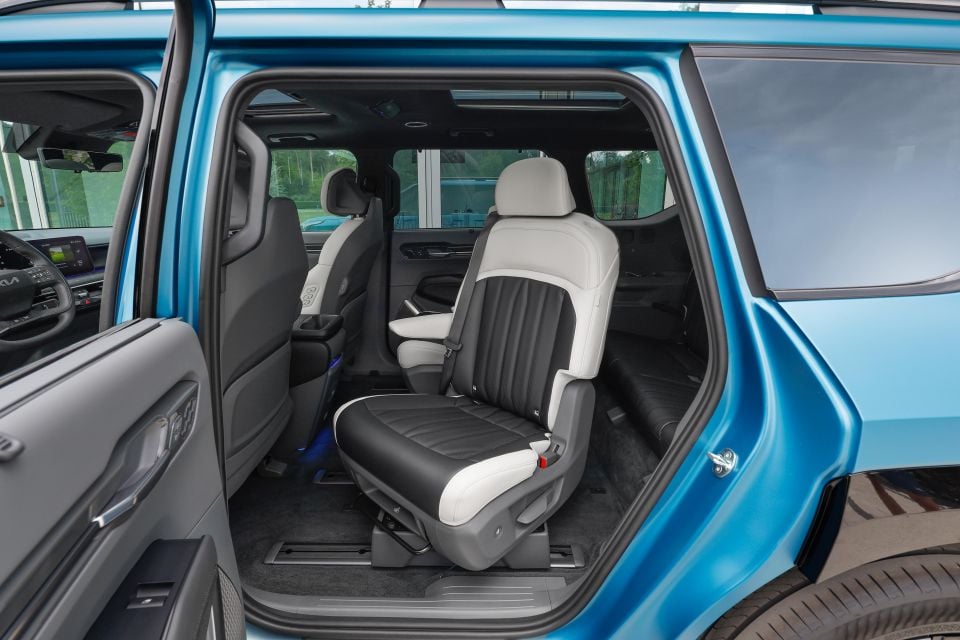
Bio PU provides the necessary comfort, support and durability for seats while promoting a more environmentally friendly approach. Bio PU foam also goes into the production of the EV9’s headrests.
Kia is taking significant steps to reduce the environmental impact of its paint selection. By incorporating rapeseed oil and vegetable oil instead of crude oil and chemical-based alternatives, Kia aims to produce less harmful paints.
Moreover, the company is transitioning to paints that are free of benzene, toluene and xylene. The interior of the EV9 showcases BTX-free paints, ensuring high-quality visuals without compromising on sustainability.
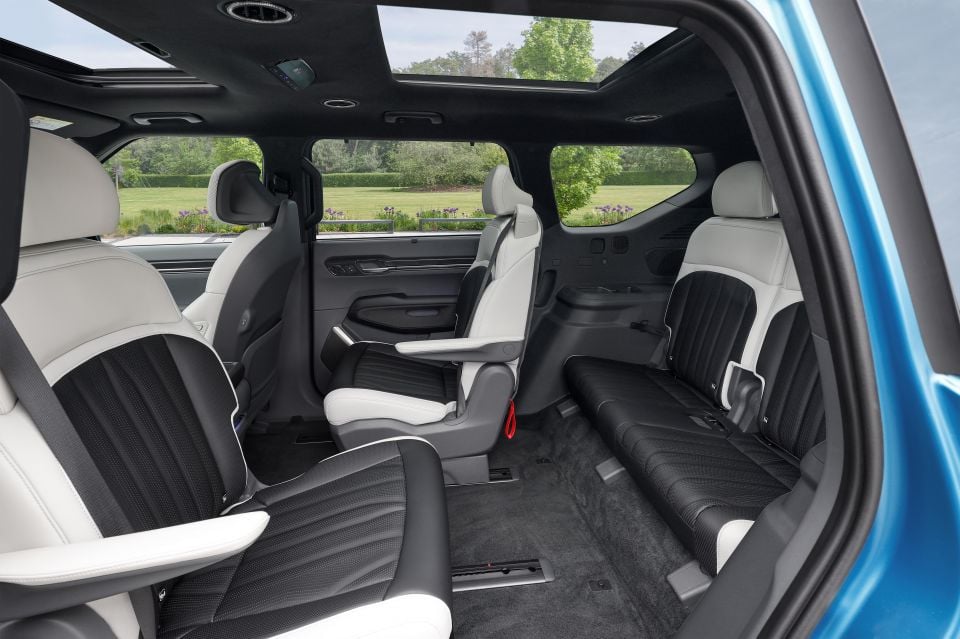
Various car components require different types of plastics. Kia acknowledges the increasing importance of recycling Polyethylene Terephthalate (PET), known for its excellent resistance to moisture, solvents and impacts, making it highly recyclable.
PET is extensively utilised in the interior of the EV9, including the cabin headliner, sun visor, headrests and seats. Each EV9 incorporates the equivalent of at least 70 plastic bottles.
Additionally, the carpets in the EV9 are made from recycled PET, with a significant portion of the material sourced from reclaimed fishing nets. Kia recognises the threat posed to marine life by the estimated 640,000 tons of discarded fishing gear in the oceans yearly.
To help combat this issue, Kia is collaborating with an organisation dedicated to cleaning up and collecting ocean waste, incorporating it directly into its recycling processes.

MORE: Everything Kia EV9
Where expert car reviews meet expert car buying – CarExpert gives you trusted advice, personalised service and real savings on your next new car.


Derek Fung
29 Minutes Ago


Matt Campbell
7 Hours Ago


William Stopford
23 Hours Ago


Josh Nevett
24 Hours Ago


Ben Zachariah
2 Days Ago


CarExpert.com.au
2 Days Ago